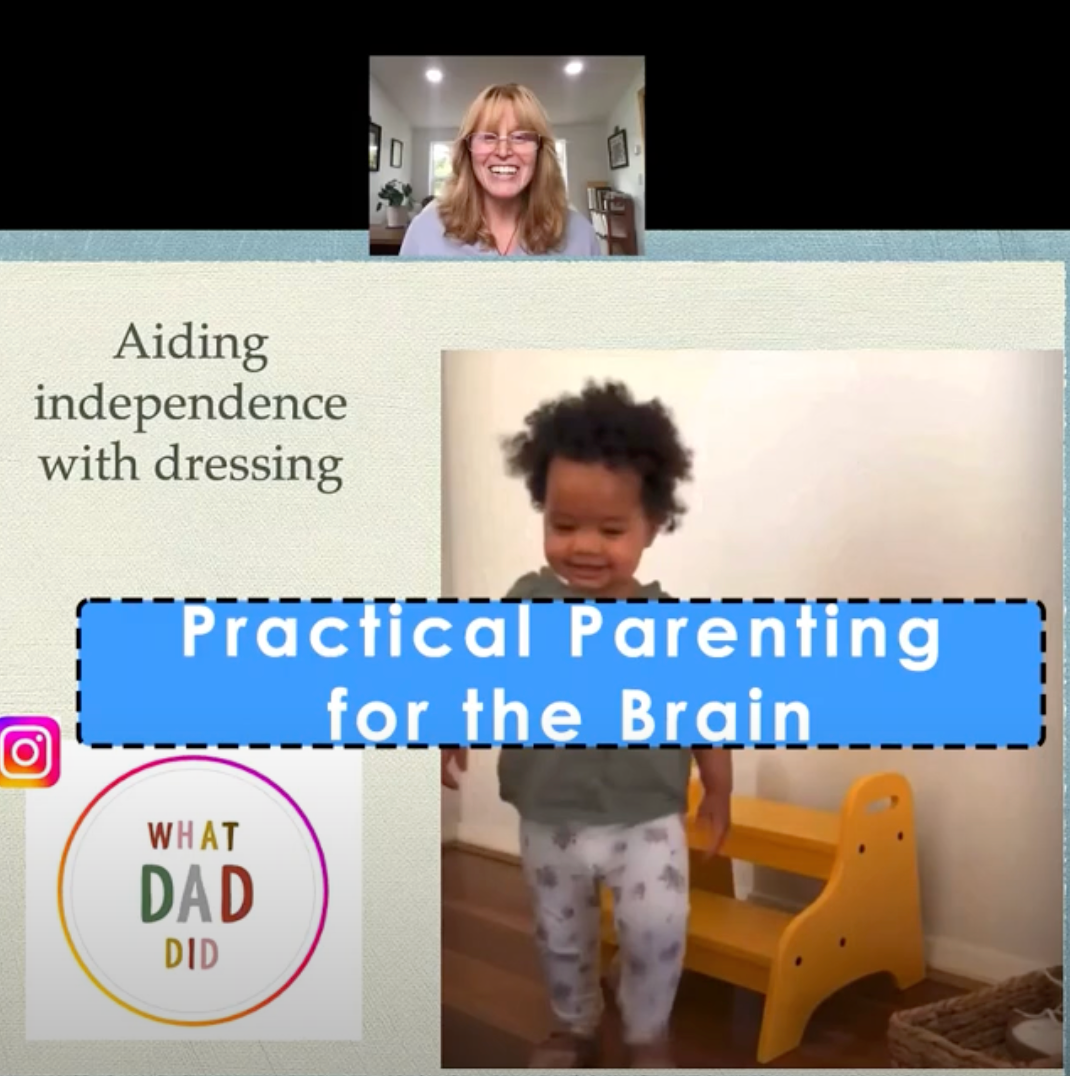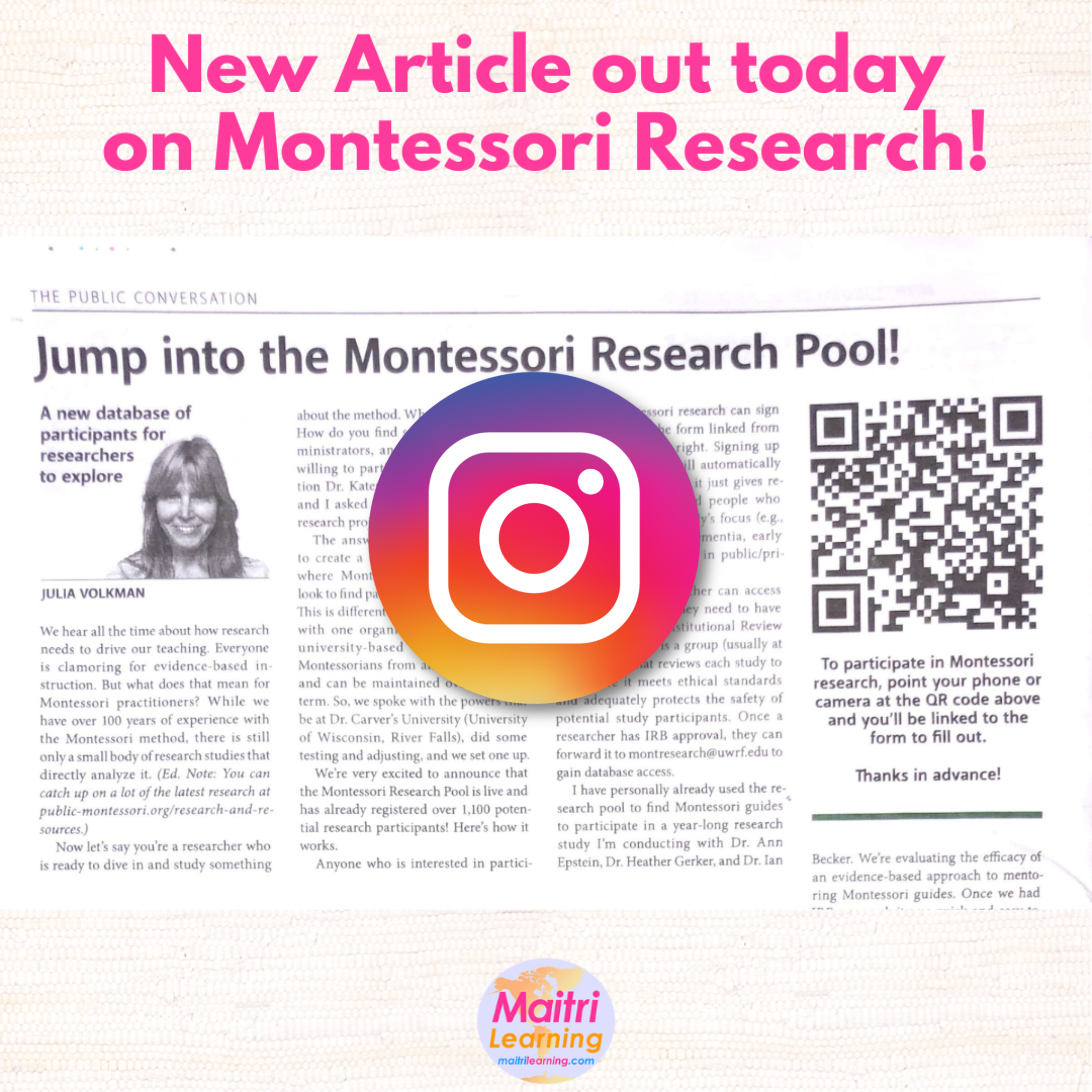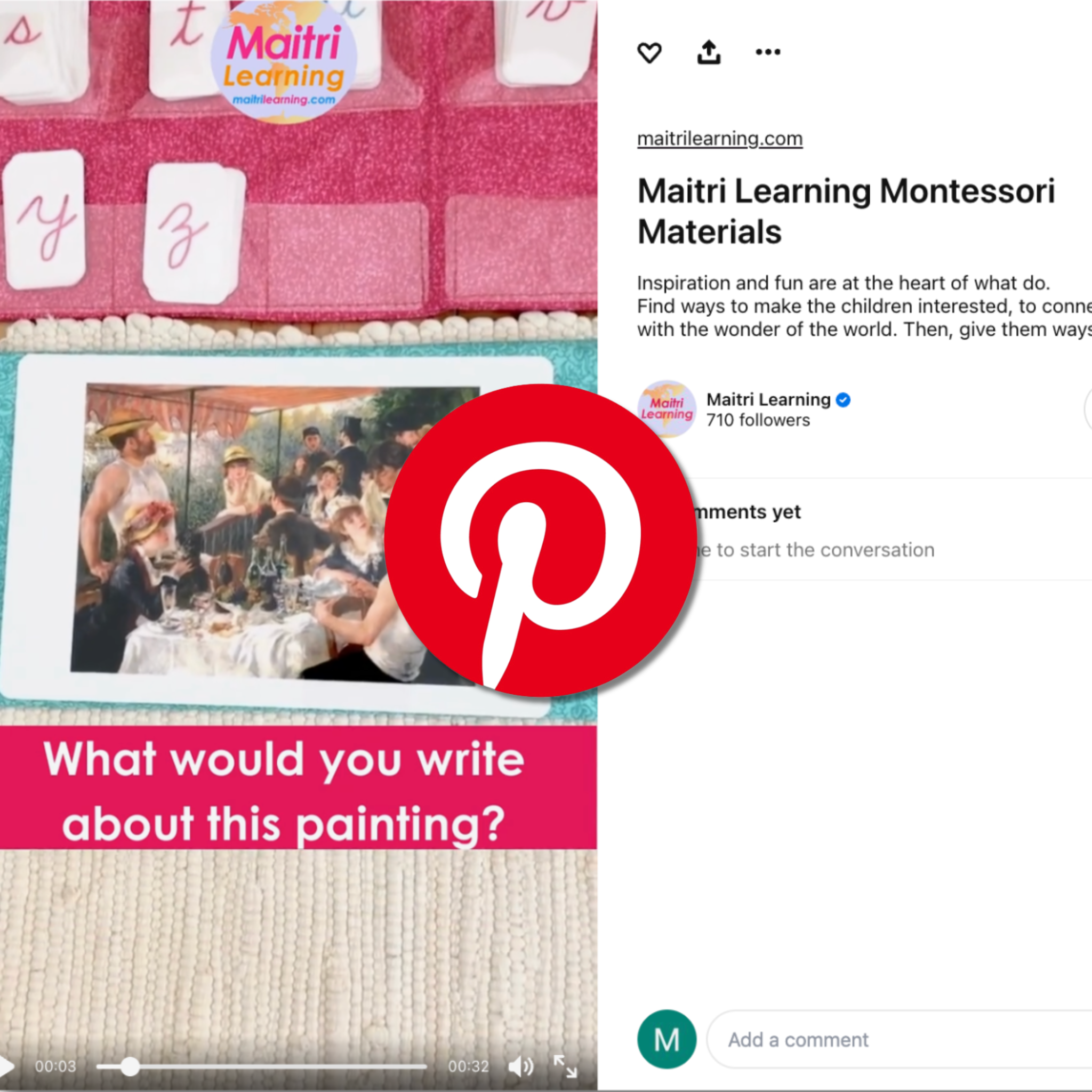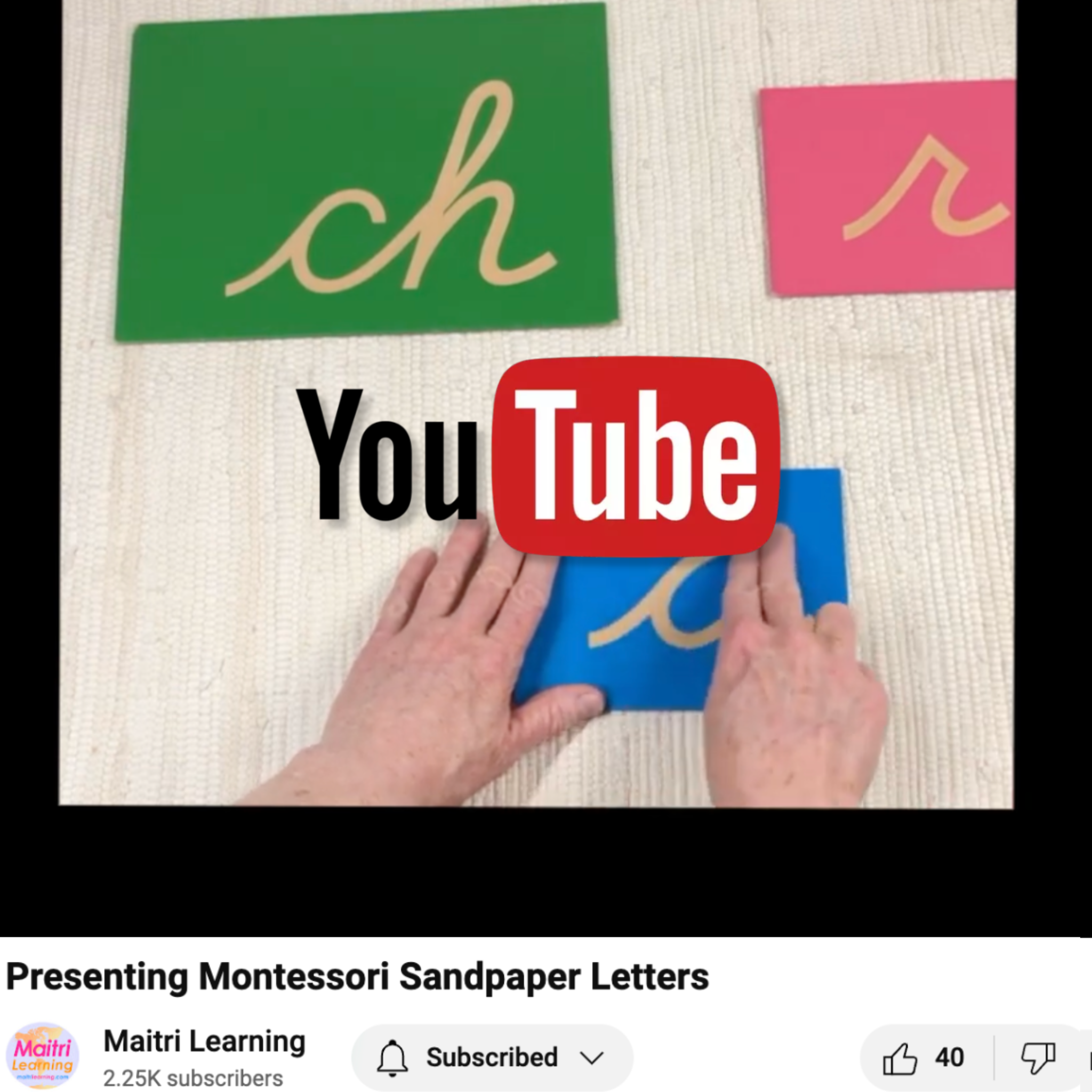Montessori Manuals and Albums

You may have noticed that we started offering our Montessori Teacher Education Albums for sale. Historically, in the AMI Montessori world, this is a big no no and I am a huge AMI Montessori fan (and an AMI graduate). So, why the heck am I offering the public our sacred teachings without requiring them to have access to a teacher preparation course? In a nutshell, because I'm a scientist.
I am offering these albums because science can not study what is hidden. If we want the Montessori method to be validated through research, we must make the method known to those who would study it. We can look to the success of other manualized programs (like cognitive behavioral therapy) as a model to help improve our teacher education programs.
Manualized programs and evidence-based interventions
I learned about other "manualized" programs while I did my graduate studies at Harvard. Did you know that the very successful mental health support method known as Cognitive Behavioral Therapy (CBT) often follows a manualized approach? What this means is that it presents therapists with a manual that gives them a precise, step-by-step approach to follow when offering CBT to their patients. They take a course to go through this manual with an instructor. Then, they use it. And, this manualized approach works (see references below)!
The manualized approach to professional education is not meant to replace the traditional approach. It just gives us another option that is known to work in other scientific fields. So, we can apply this where it fits, like in public Montessori programs.
Handwritten Montessori Albums
Dr. Montessori knew this innately, long before CBT was ever invented. She had her teachers in training write their own manuals so they would both have them as a reference and learn the material deeply. At first, most teachers wrote out their lessons by hand and drew the illustrations. Over the years, of course, computers have become common place. Now, students in AMI courses are often given word templates to type their albums into. But, they have to create all of the text themselves. Their trainers then review what they write for accuracy and the student revises as needed.
Writing your own albums is a fantastic learning experience. Most AMI teachers I know love their albums, are deeply proud of them, and refer to them all the time. They are sacred to us. But, it does not meet the needs of all students, particularly those with dyslexia or who are entering public school following a summer-based preparation program. (You can read more about this in my blog post about a pilot teacher education program I helped to develop with a team of brilliant Montessorians at NCMPS.)
What are Montessori Albums?
Montessori albums are THE resource that all Montessorians look to to support their classroom practice. They contain step-by-step instructions on how, when, and why to present all of the Montessori materials.

A Training Option
As I mentioned, in AMI teacher preparation programs, teachers-in-training write their own albums. In others, teachers-in-training are given prepared albums. While it may be more advantageous for the adult learner to write their own albums, it is not always feasible for them to do so. An alternative is needed that neither sacrifices the deep learning of the student nor the needs of schools to prepare teachers in summer-based courses. The challenge here is that the training program must adapt to the culture. We must follow the needs of the adult just like Dr. Montessori taught us to follow the needs of the child.
The burden on teachers, particularly those in public schools in high poverty districts, is too great to ask them to leave their training course in the evening only to go home and spend hours and weekends writing up their albums. We must not burn our teachers out before they set foot in the classroom!
This new manualized approach is significantly different from most programs that give students prepared manuals. How? There are two main reasons:
- The students must create part of the albums (theory and illustrations)
- The albums are unified across the curriculum
Student Creation
Our albums give teachers in training the text-based part of the album but asks them to add the theory and illustrations/photos. They are not given a complete album! Morever, students are not asked just to take a photo of a material on the shelf, but to take many photos/draw several illustrations of key steps in the presentation of each material: from layout to clean up. In order to create this level of graphic detail, they must rehearse the presentation.
The Student edition of the album is also called the Guide's Album because Montessori Teacher's aren't really teachers at all, they are guide's who connect the child with the instruction/materials they need. The children teach themselves by using the materials in the prescribed fashion.
Cohesive Approach Across Topics
In many "give them the album" training programs, different instructors teach different areas of the curriculum. You may have one person who teaches language, another who teaches sensorial, another who teaches math, etc. The challenge here is that each of these instructors uses their own album to do the teaching! But unless they all went to the same teacher education program, their albums will not be unified across curricular areas.
The lessons we offer in each area of the environment build upon and rely upon the others. For example, the way we present the red rods in Sensorial is foundational for how we present the number rods in Math.


Similarly, the very way we put the materials on the work area needs to be consistent across the classroom. Like the way we layout matching cards in the language area should be the same way we lay out the matched touch tablets in the sensorial area. The way we pick up the biggest card first when putting away our 3-part language cards, is the same way we pick up the biggest card first when putting away the decimal cards in the math area.
Why does this level of consistency matter? Because each time we predictably and consistently follow procedures, we make the environment more accessible to all children. Young children are particularly sensitive to order. This is pronounced in children with atypical development. They rely on the invisible and physical order in the space to support them in what they are doing. It grounds them and gives them agency. If we are obsessed with consistency and precision in our movements (like we are executing a choreographed dance), the children are confident that they know how things work.
If we want to be of the most benefit to the young child, we must embrace the precision and choreography of our lessons across content areas.
Supporting In-Title Teachers
These albums are not just meant for teacher training programs. They can also be used as a professional development tool for schools trying to creating common ground across different trainings. For example, in a regular teacher team meeting, you can focus on one lesson and talk about how it is done in each person's album versus the Maitri album. It's not that one approach is necessarily right and the other wrong, it's just that they are different and diversity is inherently good. The point is to get the conversation going and to open the teachers to new possibilities that may address needs they see in their students. Then, we put on our scientist hats and test the approaches to see which one works best. After all, this is a scientific pedagogy so we should question everything!
Clarifying Core Materials
I've spoken with many teachers who feel uncertain about the training they received. They think that maybe they aren't the smartest person because some parts of it didn't make sense or seemed to contradict other parts. And the truth is, I've read some of their "give them the album" albums and find them quite confusing! The research shows that sticking with the authentic Montessori materials is more beneficial for learning (Lillard, 2012). Reading the Maitri albums shows teachers what those are.
It took me years to finally get to the understanding I describe here and it was the late Jackie Cossentino who led me to the mountain top. As we worked on the NCMPS teacher education program, she helped me embrace doubt not as a flaw but as a scientific question. I am forever indebted to her encouragement and "permission" to be a scientist, unbound by a limiting cultural restriction that albums must not be shared.
So, I am dedicating these albums to Jackie. I'm sure those of you who knew her feel the same gratitude. Jackie helped us revive the scientific aspect of the Montessori pedagogy. We are not following a guru model! We are all scientists studying, applying, and adapting to the needs of the child.
I hope this helps. Please add your thoughts in the comments below. It takes a village!
References
Hoyer, J., Čolić, J., Pittig, A., Crawcour, S., Moeser, M., Ginzburg, D., ... & Stangier, U. (2017). Manualized cognitive therapy versus cognitive-behavioral treatment-as-usual for social anxiety disorder in routine practice: A cluster-randomized controlled trial. Behaviour Research and Therapy, 95, 87-98.
Johnsen, D. B., Arendt, K., & Thastum, M. (2019). The efficacy of manualized Cognitive Behavior Therapy conducted by student-therapists treating Danish youths with anxiety using a benchmark comparison. Scandinavian Journal of Child and Adolescent Psychiatry and Psychology, 7(1), 68-80.
Lillard, A.S. (2012). Preschool children's development in classic Montessori, supplemented Montessori, and conventional programs. Journal of School Psychology, 50(3), 379-401.
Mann, R. E. (2009). Sex offender treatment: The case for manualization. Journal of Sexual Aggression, 15(2), 121-131.
Márquez-González, M., Romero-Moreno, R., Cabrera, I., Olmos, R., Pérez-Miguel, A., & Losada, A. (2020). Tailored versus manualized interventions for dementia caregivers: The functional analysis-guided modular intervention. Psychology and Aging, 35(1), 41.
Perepletchikova, F., & Kazdin, A. E. (2005). Treatment integrity and therapeutic change: Issues and research recommendations. Clinical Psychology: Science and Practice, 12(4), 365.
Vinnars, B., Barber, J. P., Norén, K., Gallop, R., & Weinryb, R. M. (2005). Manualized supportive-expressive psychotherapy versus nonmanualized community-delivered psychodynamic therapy for patients with personality disorders: bridging efficacy and effectiveness. American Journal of Psychiatry, 162(10), 1933-1940.








Leave a comment
This site is protected by hCaptcha and the hCaptcha Privacy Policy and Terms of Service apply.